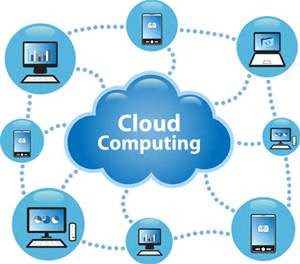Oracle
The simple definition: It’s a style of computing based on shared, elastic resources delivered to users in a self-service, metered manner using web technologies. Yet, if you ask five people “what is cloud computing?” you can expect five different answers. Why? Because what matters to them is not what cloud computing is, but what it does for them.
To fully understand cloud computing across an enterprise, you need to understand the different functional benefits driving cloud’s popularity. Let’s look at cloud through the lens of different roles in an enterprise, and then think about how to craft a cohesive cloud strategy that works for everyone in the enterprise. Let’s start with these important roles.
Business Leaders
This group wants cloud for modern, personalized applications. In the digital economy, companies must execute in real-time, from providing customer experiences to building talent-centric HCM strategies. Your customers want to seamlessly interact with their brand, wherever and whenever they want on social media, mobile, in-store, through the call center, on your website, and when making a purchase online. Speed, integrated processes, and analytics are vital. For these people, cloud often means SaaS-based applications that are fast, simple, and give the business side more control.
IT Leaders
IT also sees enormous value in the cloud, particularly in the application and platform services that let internal IT groups offload technology management. CIOs cannot forget existing infrastructure requirements when they evaluate cloud computing, and cloud services such as PaaS and IaaS can help them integrate applications and create consistent workflows across multiple systems—both on premises and in the cloud—while maintaining security and performance. As a result, IT can move away from technology administration and concentrate on business innovation.
Cloud Builders
Private cloud deployment is booming, as companies see the benefits of faster provisioning, on demand access, and scalability. Cloud builders can help their IT department become agile, cost-efficient private cloud providers. They view cloud from a lifecycle management perspective, from resource management and monitoring to capacity planning and chargeback mechanisms.
Developers
For this group, moving development and testing environments to PaaS platforms allows them to cut significant time from the development cycle by removing management tasks, cutting complexity, and increasing developer productivity.
Total Cloud
The key then is to build a cloud strategy that helps every group define not only what cloud computing means to them, but also how to best use it.
The best use might be to build a cloud behind your firewall. Or it could be to subscribe to cloud applications and compute services from a trusted cloud vendor. Another option is to use infrastructure or application that is dedicated to your organization but hosted by a vendor or a local partner.
Most likely, you’ll be using several of the above of the above scenarios at once. So it makes sense to choose a cloud provider with solutions that are preintegrated and tested to work across the entire stack, whether in your data center or in the cloud. That way, even though cloud computing means different things to different people, you will have a single, complete, and integrated platform to serve them all.
Explore the resources on this page to learn about the most complete, integrated cloud solutions in the industry.
